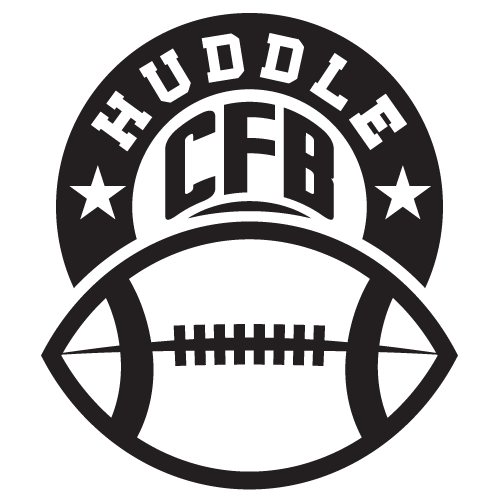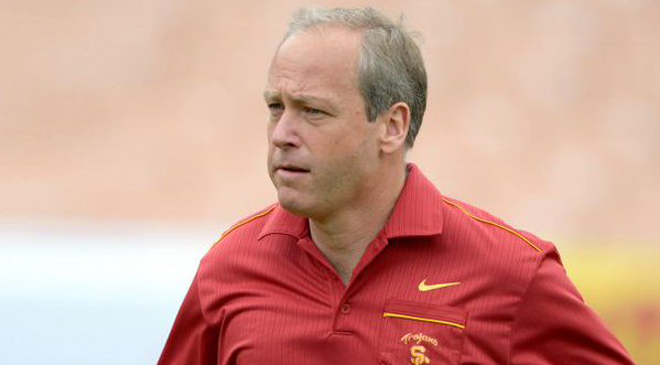Coordinator changes around Pac-10 football last decade were a reflection of USC’s dominance over the conference. Mike Bellotti’s hire of little-known New Hampshire play-caller Chip Kelly in 2007 set the tone for a systemic shift around the conference, functioning as the centerpiece of an era that introduced Sonny Dykes, Noel Mazzone and others in as offensive coordinators.
Oregon’s success with an ever-evolving spin on the hurry-up spread pushed the conference’s direction further in that direction, evident in the hire of head coaches like Rich Rodriguez, Todd Graham and Mike Leach. But after Stanford’s third Pac-12 Conference championship in four seasons, a new round of coordinator changes across the league point to a philosophical shift in the coming years.
Arizona, Oregon and USC all introduced new defensive coordinators in the last week: Marcel Yates, Brady Hoke and Clancy Pendergast, respectively. Each hire likely marks a schematic departure from previous years for each program.
Yates comes to Arizona from Boise State, where the Broncos’ swarming defense produced some of the nation’s leading sack, tackle for loss and turnover-generating numbers. Conversely, predecessor Jeff Casteel’s defenses lagged in all three categories.
Casteel’s signature 3-3-5 scheme was designed as a natural counter to the speedy, wide-open offensive style Rodriguez-coached teams employed. Seemingly, the 3-3-5 would have been the perfect fit for the Pac-12 and its prevalence of free-wheeling offenses.
Contrast that with the allusions Yates made in his introductory video, wherein he talked of the great Arizona defenses of the 1990s.
The tremendous Desert Swarm defenses under Dick Tomey were built on a variation of the 46 defense, often starting with a five-man base on the line. Desert Swarm went to an extreme with standard eight-man boxes in a 5-3 set; newly (re)named USC defensive coordinator Clancy Pendergast’s scheme isn’t quite as aggressive.
However, Pendergast reintroducing the 52 formation after a two-year layoff marks a significant departure from Justin Wilcox’s 3-4.
The change Clay Helton wanted in his team’s defense was written on the wall in USC’s Holiday Bowl loss to Wisconsin. Interim defensive coordinator Peter Sirmon oversaw a 4-3 implemented on short prep time, resulting in the best line play of the Trojans’ season.
Despite success at Washington, Wilcox’s 3-4 — predicated on speed and athleticism in natural balance to hurry-up spread attacks — never took at USC. Neither of the last two Trojan defenses boasted the kind of success of Pendergast’s one season at USC, 2013, when the Trojans ranked No. 14 nationally against run, No. 19 in tackles for loss accrued, and No. 25 sacks.
OFFICIAL: Clancy Pendergast, who led USC's best defense in the past 7 seasons, to return as defensive coordinator. pic.twitter.com/g58Iey2wUi
— USC Trojans (@USC_Athletics) January 12, 2016
Pendergast’s 52 took the fight to opposing offenses with an aggression up front lacking from Wilcox’s defenses. The scheme has high potential next season with talented youngsters like Rasheem Green, Osa Masina and Porter Gustin seeing more opportunities to bring pressure.
The most mysterious of the three defensive coordinator changes is Oregon’s hire of Brady Hoke, a head coach for the previous 13 years (barring his 2015 sabbatical) with no prior defensive coordinating experience.
But Hoke made his coaching bones before becoming Ball State’s head coach by leading the Michigan defensive line in the rough-and-tumble Big Ten. In 2002, Hoke’s last season as the Wolverines’ defensive line coach, they held opponents to just 3.4 yards per rushing attempt.
Hoke’s hire is a wild card in that there’s little in his resume recently to hint at just what he’ll run. He spent much of his career working alongside Rocky Long, one of the game’s sharper defensive minds, who served as Hoke’s DC at San Diego State.
Interestingly enough, Long runs a variation of the 3-3-5 that powered the Aztecs to their first outright Mountain West Conference championship.
However, at Michigan, Hoke tabbed Greg Mattison and his 4-3 scheme.
No matter the philosophy he implements, Hoke’s arrival at Oregon signals a departure from the status quo for the Ducks. Don Pellum succeeded Nick Aliotti, a trailblazer in defending hurry-up spreads.
A longtime (and still) Ducks assistant, Pellum’s promotion followed the Oregon blueprint of keeping personnel moves in-house whenever possible. Hoke’s hire marks a significant departure from that philosophy, and he brings with him a Big Ten ethos that stands in stark contrast to Oregon’s identity.
These defensive shifts and coordinator changes are the latest entries in the conference’s continued game of follow-the-leader. The leader now is Stanford.
The Cardinal first turned the conference’s hurry-up offenses on their ears under Derek Mason, now the head coach at Vanderbilt. Mason didn’t sacrifice physicality in the box to adjust for speed, but rather prepared linebackers to cover receivers. Some background is offered in this in-depth piece from 2014 by Coy Wire.
Stanford dispelled any notion an old-school defensive model couldn’t work against the speed seen in abundance around the Pac-12.
An interesting wrinkle to Stanford’s success, juxtaposed against teams like Arizona and Oregon potentially adopting similar defensive mindsets, is the Cardinal’s offensive philosophy.
Stanford’s offset its defensive tenacity with an offense that traditionally sits on the ball. The Cardinal routinely rank among the nation’s leaders in time of possession under David Shaw, this year leading all of college football in that category.
Stanford’s ability to monopolize possession is due in part to the performance of its defense, but employing a more traditional offense that huddles up before every snap is all part of the game plan.
In that vein, the Pac-12’s coordinator changes are not limited exclusively to the defensive side of the ball. UCLA’s Jim Mora named Kennedy Polamalu offensive coordinator after Mazzone’s departure for Texas A&M.
Polamalu helped lay the foundation for USC’s overwhelming power game of the 2000s, working as running backs coach under Pete Carroll in the early 2000s. Polamalu later worked with celebrated Bruins alum Maurice Jones-Drew as the Jacksonville Jaguars running back coach, before a brief return to USC.
Polamalu’s hire brings with it the promise of a new offensive look at UCLA, which Mora detailed last week via UCLABruins.com:
“As we continue to evolve as a program and tailor our philosophies and schemes to the strengths of our players, what you will see is a multifaceted offense incorporating tight ends and fullbacks into our schemes.”
An NFL lineage. Involvement in one of college football’s most dominant pro-set offenses. Fullbacks and tight ends. Polamalu checks off every box for UCLA introducing a more traditional offensive style, better suited to the strengths of quarterback Josh Rosen.
Rosen’s drawn comparisons to Andrew Luck, so why not emulate the look in which Luck thrived during his tenure at Stanford?
Meanwhile, defensively, UCLA already bought into the physical and aggressive defensive mindset last offseason when it brought Tom Bradley on to replace Jeff Ulbrich. All told, the 2016 Bruins are going to look like the Cardinal of the South — if crosstown rival USC doesn’t garner that distinction first.
Helton already shifted the offensive back to a more traditional style after replacing Steve Sarkisian midway through 2015, reintroducing a methodical run game and more prominently showcasing tight ends. USC’s philosophical shift is less a case of chasing the trend-setter, and more the program looking to return to the model that previously made it the team everyone else was chasing.
These things always come full circle, eventually.


